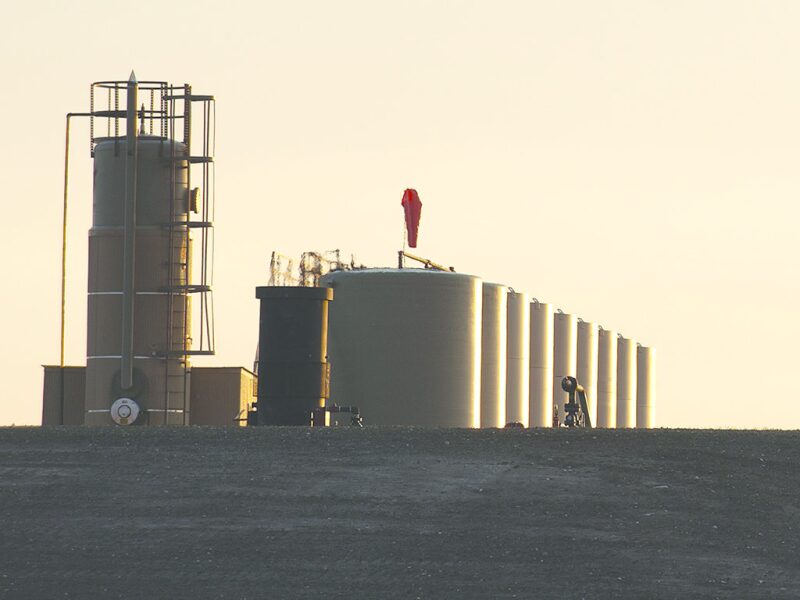The importance of reducing emissions of methane, a short-lasting but powerful atmospheric greenhouse gas (GHG), received close attention from panelists at an IHS CERAWeek strategic dialogue, Tightening the Valves on Global Methane Emissions.
A frequently asked question is “why all this focus on methane,” said Mark Brownstein, vice president for climate and energy at the Environmental Defense Fund (EDF). “Isn’t the issue carbon dioxide [CO2]? Actually, it’s both.”
Methane emissions remain in the atmosphere for much less time than CO2 but are a far more powerful pollutant while they last. “It’s thought that 25% of the warming that we’re experiencing right now on the planet is because of methane emissions,” Brownstein said. “A 45% reduction in oil and gas industry methane emissions would have the same impact over 20 years as closing one-third of the world’s coal [-fired power] plants.”
Throughout Supply Chain
Methane emissions occur throughout the natural gas supply chain, in many cases coming from older equipment and leaks across the system, Brownstein noted. A recent EDF study estimated that methane emissions in the Barnett Shale of north Texas are 90% higher than previously estimated in the United States Environmental Protection Agency (EPA) inventory, he said.
The industry’s methane emissions reflect a “fat tail” problem, in which a large share of the emissions come from “a relatively discrete number of sources,” Brownstein said. However, he added, “Part of the problem is these sources are not necessarily predictable.”
Thus, the EDF strongly supports adopting regulations to require systematic leak detection and repair. An EDF-commissioned study by ICF International 2 years ago estimated that a 40% reduction in US oil and gas industry methane emissions was achievable at a cost of USD 0.01/Mcf of gas produced.
In the question-and-answer session following the panel discussion, Brownstein said, “The methane issue goes right to the heart of the assertion that natural gas is a cleaner, low-carbon alternative to coal or oil. …. The jury is still out.”
The methane leakage rate [well to city] needs to be below approximately 2.6% “for natural gas to be considered advantaged over coal in all time periods,” Brownstein said. “The data is not very good globally, but right now the data suggest that the global emission rate is over 3[%]. So this is a real cause for concern.”
Nate Teti, vice president of communications for US development and production at Statoil, said his company has the goal of becoming the industry’s most carbon-efficient oil and gas producer. Statoil views methane emissions as a safety, environmental, and cost issue, he said.
Statoil’s efforts to reduce methane emissions involves work with multiple stakeholders on facilities optimization, inclusion of methane in a voluntary company fugitive emissions reduction program, and initiatives in scientific research and technology development, Teti said.
Braulio Pikman, senior partner at ERM, an environmental consulting firm, argued that heightened attention be given to reducing intentional methane releases from flaring and venting and to preventing significant accidents.
The impact of a single accident, such as the recent Aliso Canyon leak near Los Angeles, can outweigh years of gains from detection and control programs, he said.
Pikman emphasized the impact of permitted flaring operations and said that flaring emissions could be reduced “by nearly 99.99%” through replacing open flares with closed flare systems.
Carey Bylin, international programs leader for oil and gas at the US EPA, said, “Reducing methane emissions is an important part of the overall climate strategy” of the EPA.
Administration Actions
The Obama Administration over the last 2 years has undertaken several measures involving voluntary and regulatory action that include or focus on the reduction of methane emissions, she noted. These include
- The White House Strategy to Reduce Methane Emissions, announced in March 2014
- A new rule to cut methane emissions by 40% to 45% from 2012 levels by 2025, implemented in January 2015
- The addition of methane control to EPA’s New Source Performance Standards in August 2015
- Control technique guidelines to reduce the emission of volatile organic compounds from equipment and processes used in the oil and gas sector, proposed in August 2015 and opened for comments with final guidelines expected this spring.
The EPA’s GHG reporting program is in its sixth year of collecting data from the oil and gas industry, Bylin said.
Promise of Natural Gas
Rob Jackson, professor of earth sciences at Stanford University, spoke of the “promise of natural gas,” if methane emissions along the whole supply chain could be reduced.
“Think about the opportunity to reduce those leaks and build a social contract—to strengthen the social contract—for a public that wants to use natural gas,” Jackson said.
Jackson was lead author of a study published in the journal Environmental Science & Technology in September that documented leaking methane in Manhattan and estimated that the urban center had 10 times the number of leaks per mile in its aging natural gas pipeline system as other cities with newer infrastructure. Rooftop surveying done as part of the study showed methane levels to be double those listed in New York State published inventories.
A similar study done earlier in Boston spurred Massachusetts legislators to enact an accelerated pipeline replacement program, Jackson said.
He said that we are witnessing “the sensor revolution,” with the cost of sensors having fallen dramatically and set to fall further. For the industry, this decline is “providing opportunities and challenges,” Jackson said. “It’s going to change the industry relationship not just with the regulators but I think with the public.”
In a few years, there will likely be citizen monitors of methane “hot spots.” Jackson said that “the access to information is going to grow exponentially” and that the industry needs to get “out front of that.”

